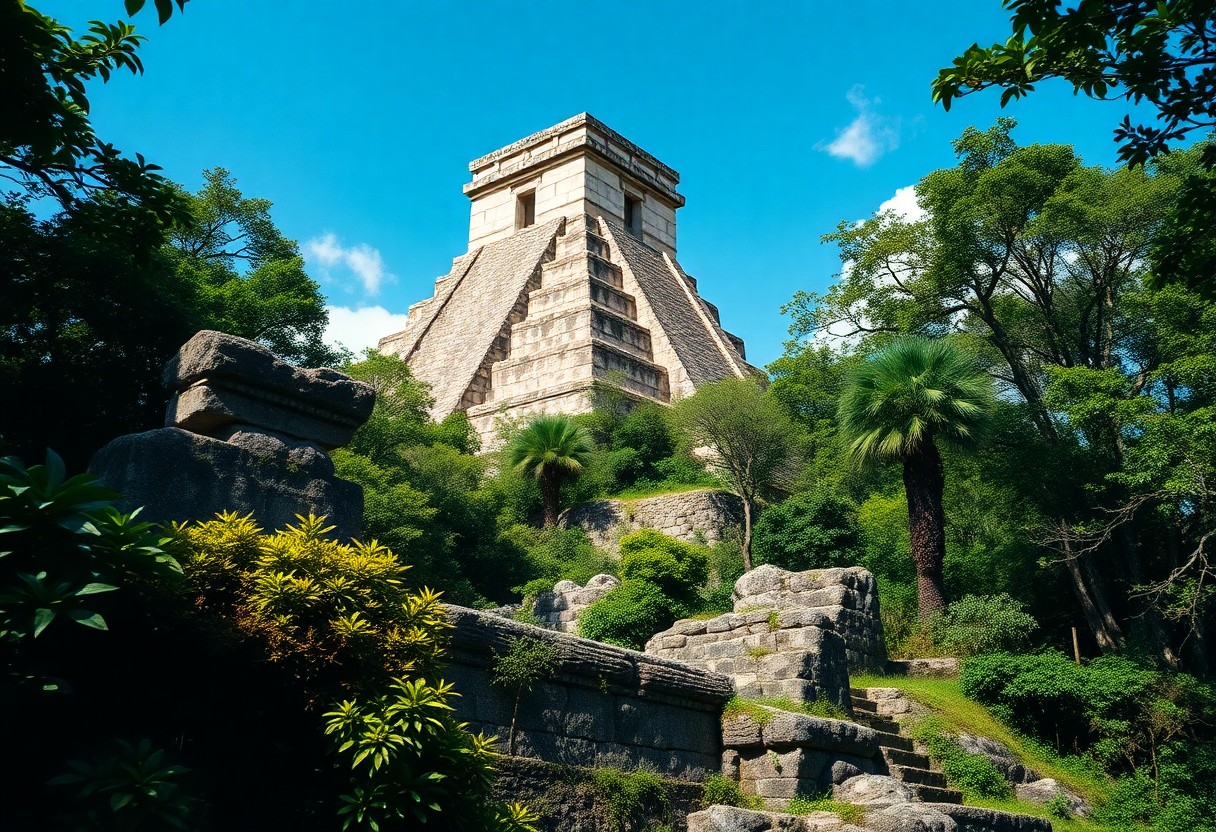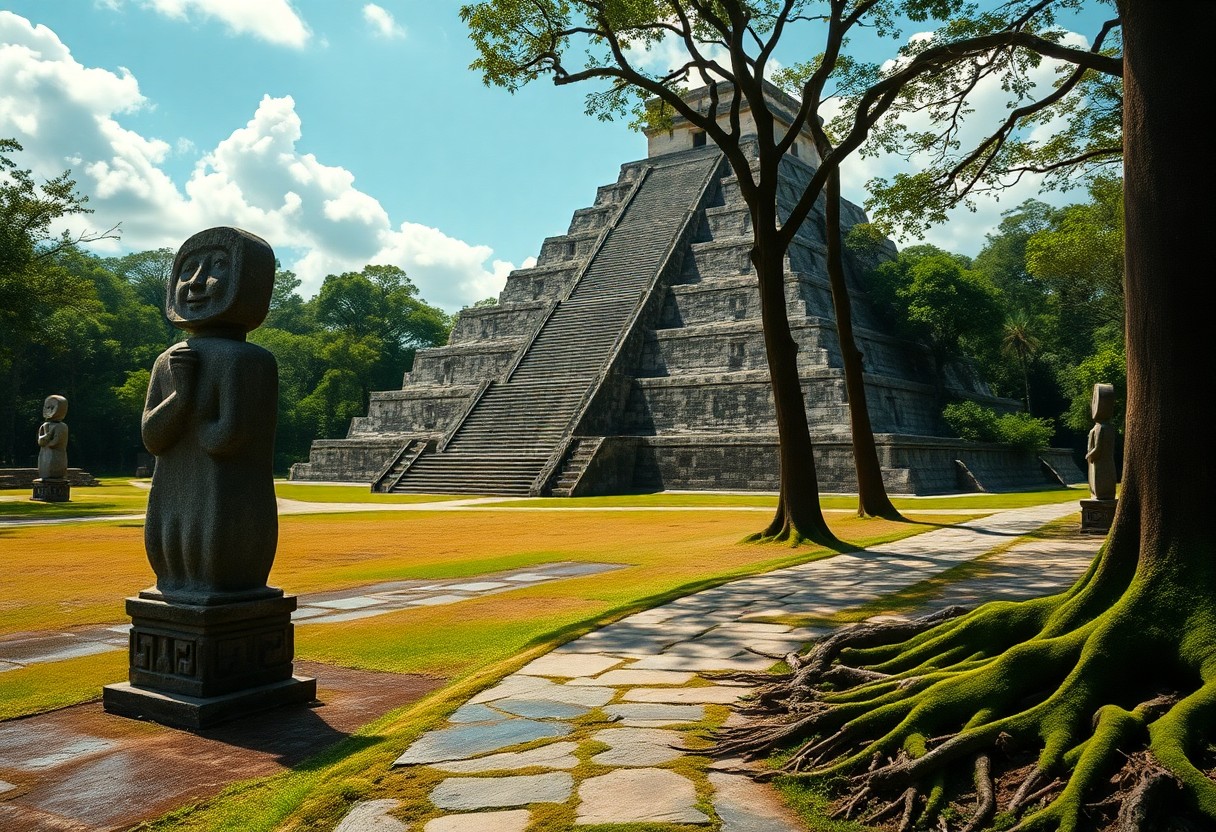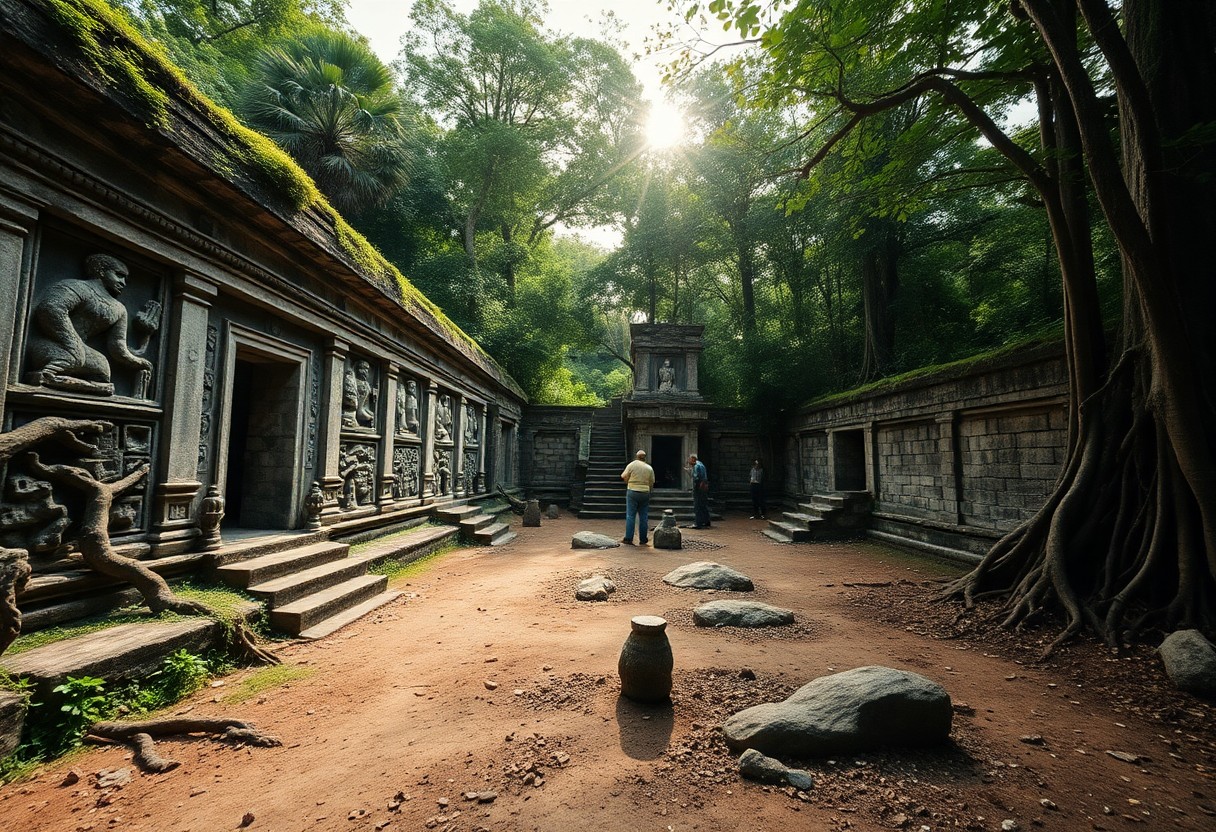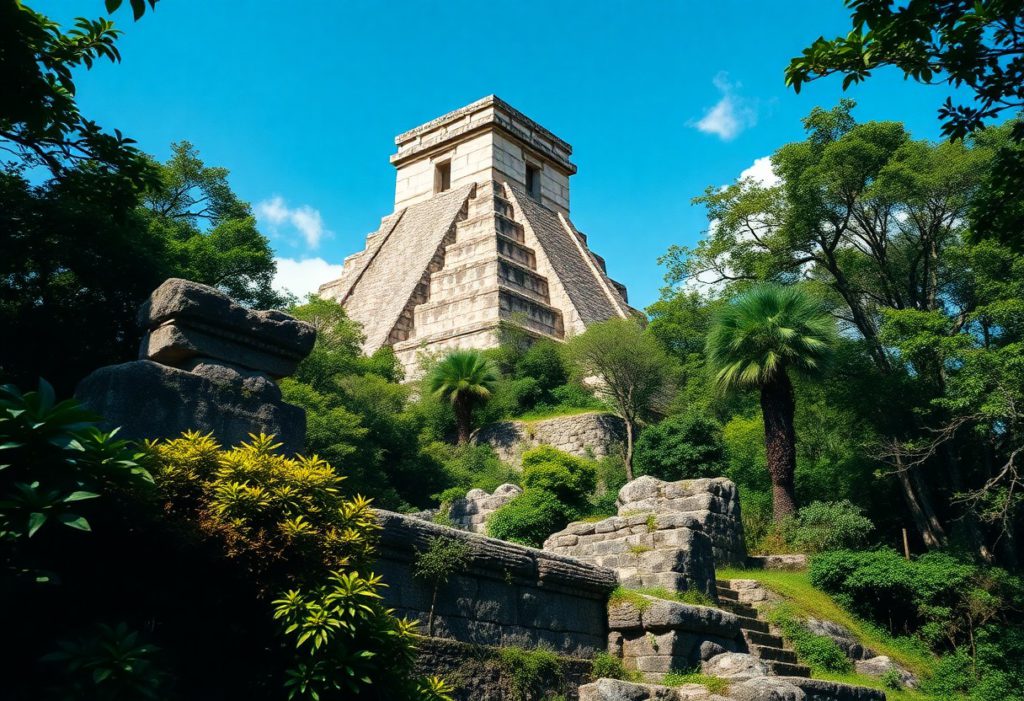Uncover the Astonishing Marvels of Caracol: A Historic Maya Metropolis
As you embark on a journey through the expansive Caracol ruins, you are enveloped by an overwhelming sense of wonder, revealing the extraordinary ingenuity and artistic expression of the Maya civilisation. Spanning an impressive area of over 68 square kilometres, Caracol stands as the largest Maya site in Belize, showcasing architectural marvels that fundamentally reshape your perception of ancient urban life. The awe-inspiring structures, including the famed Caana (“Sky Place”), ascend majestically to nearly 43 metres in height. As you meander through the site, intricate carvings and stelae tell the stories of powerful rulers, while the remnants of an advanced water management system highlight the exceptional engineering capabilities of this ancient society. Surrounded by lush tropical jungle, the ruins beckon you to dive deeper into a rich historical narrative, eager to be explored.

Delve into the Architectural Wonders of Caracol
The grandeur of Caracol is vividly illustrated through its magnificent architecture, reflecting the sophisticated engineering mastery of the Maya civilisation. With over 35,000 structures scattered across an expansive area of 200 square miles, the layers of history and innovative designs merge to create an awe-inspiring environment. Towering pyramids, lavish palaces, and sacred temples dominate the skyline, offering a glimpse into not merely a city but a vibrant cultural hub that once thrived with human activity, commerce, and social interaction.
Discover the Importance of Monumental Structures in Caracol
The remarkable buildings found within Caracol serve as symbols of the power and influence wielded by the ancient Maya civilisation. The towering pyramid, known as Caana or “Sky Place,” rises to an impressive height of 143 feet and stands as a testament to the architectural aspirations of the Maya. Its multiple tiers and exquisitely crafted stonework not only exhibit exceptional engineering skill but also signify the city's vital role as a key political and spiritual centre in the region.
Appreciating the Role of Sacred Spaces in Maya Culture
At the heart of Caracol, sacred spaces held immense significance in the daily lives of the Maya, serving as venues for spiritual rituals and community gatherings. These areas were meticulously designed to align with celestial events, further enhancing their importance within Maya culture. Temples and altars marked the locations where residents sought divine favour, underscoring their deep spiritual connections.
Beyond their function as places of worship, these sacred spaces fostered social cohesion and cultural identity. Every year, major ceremonies linked to the rich Maya pantheon were celebrated here, reinforcing collective memories and shared beliefs. By strategically positioning their temples and altars, the Maya created powerful visual landmarks that not only oriented their city but also anchored their cosmological beliefs within the landscape. The presence of these sacred structures in Caracol underscores their essential role in nurturing community bonds and ensuring prosperous agricultural cycles, which were intimately connected to their spiritual practices.
Caracol: The Economic Engine of an Ancient Civilisation
The prosperity of Caracol, recognised as the largest ancient city in Belize, was significantly reliant on its multifaceted economy. From advanced agricultural methodologies to extensive trading networks, these components worked in harmony to sustain a thriving community. Ultimately, the interdependence of local resources and expansive trade routes enabled Caracol to flourish during its peak in the Classic Maya period.
Examining the Trade Networks that Sustained Caracol’s Economy
Caracol thrived due to a well-established network of trade routes that extended far beyond its geographical boundaries. Merchants would be seen transporting valuable commodities such as jade, obsidian, and cacao across Mesoamerica, thereby linking Caracol with other prominent Maya city-states. These connections not only stimulated economic expansion but also enabled cultural exchanges that enriched the social fabric of the city.
Agricultural Practices: The Cornerstone of Maya Society
Agriculture constituted the backbone of life in Caracol, supporting its vast population and intricate societal structure. The Maya cultivated a diverse range of crops, including maize, beans, and squash, employing innovative techniques that enhanced yield and sustainability. By developing advanced terrace farming methods on hilly terrains, they maximised arable land and secured food supplies, which were vital for maintaining a flourishing civilisation.
The agricultural practices observed at Caracol were nothing short of revolutionary. The ancient Maya implemented methods such as slash-and-burn agriculture, effectively replenishing soil nutrients for sustained productivity. Their use of raised fields and sophisticated irrigation systems showcased their remarkable adaptability to the environment. Corn, as a staple crop, formed the foundation of the Maya diet, yet they also cultivated a variety of additional crops to ensure nutritional diversity. This robust agricultural system not only sustained the local populace but also played a crucial role in trade, further solidifying Caracol’s status as a key city within the greater Maya civilisation.

Insights from the Rise and Decline of Caracol
The historical narrative of Caracol reveals significant lessons about the intricate interplay of environmental factors, societal transformations, and economic dynamics. Gaining insights into the rise and fall of this ancient city offers invaluable perspectives for contemporary societies facing similar challenges.
Identifying Factors Leading to Economic Decline
Several interconnected factors contributed to the economic downturn of Caracol, including:
- Environmental degradation triggered by deforestation and intensive agricultural practices
- Migratory patterns of neighbouring city-states that intensified competition
- Resource depletion within the region affecting trade viability
- Drought conditions placing immense stress on water resources and agricultural productivity
This combination of factors ultimately undermined the economic foundations that sustained Caracol.
Investigating Societal Changes and Cultural Evolutions
Throughout its history, Caracol experienced significant societal changes marked by shifts in governance and cultural practices. The transition from a predominantly communal society to a more stratified structure signifies changes in leadership dynamics and the evolution of local beliefs. Religious practices intensified during the late Classic period, as evidenced by the elaborate temples and ceremonial complexes that dominated the landscape. Increased interactions with other city-states also introduced new ideas and technologies, reshaping Caracol’s societal fabric in response to external influences. These transformations reveal how such dynamics contributed to the city’s resilience and adaptability, enabling it to flourish during its peak.

Rediscovering Caracol and Ongoing Preservation Efforts
The rediscovery of the Caracol Maya site has unfolded as a remarkable journey that began in the 1930s. Initially, the vast area of Caracol was largely forgotten, overshadowed by other prominent archaeological sites until it underwent extensive re-examination by researchers from the University of Belize in the late 20th century. Since that time, significant efforts have been made to stabilise and preserve the Caracol ruins, ensuring that this rich historical tapestry remains intact for future generations. Collaborative initiatives between international archaeologists and the Belizean government have led to substantial advancements in both research and conservation practices.
Addressing Challenges in Archaeological Research
Conducting archaeological research at Caracol presents numerous challenges, ranging from the dense jungle environment that obscures structures to the limited funding available for excavation and conservation efforts. These obstacles can impede progress, making it increasingly difficult to fully uncover the site’s monumental past. Moreover, the ongoing impact of environmental factors, such as erosion and deforestation, threatens to compromise the integrity of the largest Maya site in Belize.
Understanding the Role of Tourism in Preservation Efforts
Tourism has emerged as a crucial element in the conservation of Caracol, providing essential funding for ongoing preservation initiatives. Each ticket purchased by visitors contributes directly to the resources needed for maintaining the site and facilitating further research. Engaging tourists through guided tours not only enhances their experience but also educates them about the importance of protecting this historically rich environment, fostering a deeper appreciation for cultural heritage.
As you traverse the majestic Caracol ruins, your visit plays an integral role in supporting conservation efforts. The influx of tourists to the site generates revenue that enables the implementation of preservation strategies to mitigate environmental degradation and human impact. Educational initiatives promote responsible tourism, highlighting the delicate balance between visitor enjoyment and the necessity of safeguarding this ancient wonder. By participating in the tourism surrounding Caracol, you contribute to a broader movement that ensures the site can be cherished by future generations while preserving its historical significance.
Influence on Community and Culture Today
The enduring legacy of the Caracol Maya site continues to shape the local community in Belize, influencing not only tourism but also cultural pride and identity. As the largest ancient city in Belize, Caracol serves as a focal point for educational initiatives, drawing attention to the rich history and traditions of the Maya civilisation. This connection fosters a sense of stewardship among local inhabitants, ensuring the preservation of both the historical site and the narratives of their ancestors.
Community Involvement in Heritage Preservation
Local community members actively engage in conservation efforts surrounding the Caracol ruins, collaborating with archaeologists and historians to safeguard their cultural heritage. Through workshops and outreach programs, these community members share their expertise in traditional crafts and agricultural techniques. Their involvement is crucial for raising awareness and securing funding for ongoing preservation projects, ensuring that future generations can appreciate the significance of Caracol.
Revitalising Ancient Traditions in Contemporary Contexts
Revitalising ancient traditions remains a vibrant aspect of life for many in the communities surrounding Caracol. You may encounter local festivals showcasing traditional music, dance, and culinary practices rooted in ancient Maya culture. By embracing these customs, residents not only preserve their identity but also attract visitors eager to immerse themselves in authentic, culturally rich experiences.
Living traditions such as the creation of artisanal crafts, organic farming methods, and ritual practices are integral to local life today. During significant festivals, community members don traditional attire, displaying intricate designs that reflect the artistry of the ancient Maya. Additionally, local descendants frequently participate in workshops aimed at teaching these techniques to younger generations, ensuring that the skills and knowledge associated with their heritage endure. As you visit, you’ll sense the vibrant pulse of a community deeply connected to its past while embracing contemporary life, creating a truly enriching experience.
Experience the Rich Heritage of Caracol
As you journey through the Caracol Maya site, the largest ancient city in Belize, you gain a profound understanding of the rich cultural and historical tapestry woven by the Maya civilisation. Your exploration of the Caracol ruins not only reveals breathtaking architecture and deep insights into societal frameworks but also deepens your appreciation for Belize’s archaeological heritage. Engaging with this remarkable site invites you to envision the lives of those who flourished here centuries ago, connecting you to a legacy that resonates through time.
Caracol Maya Site: Belize's Largest Ancient Urban Centre
Caracol stands as one of the most significant archaeological sites in Belize, celebrated for being the largest Maya city in the region. This ancient urban centre, with its impressive ruins, offers a window into the rich history and cultural intricacies of the Maya civilisation. In this article, we will delve into the essential features of Caracol and understand what makes it an unmissable destination for travellers and history enthusiasts alike.
Q: What is Caracol and where can it be found?
A: Caracol is an ancient Maya city located in the Cayo District of Belize. It lies approximately 40 miles (64 km) south of San Ignacio, nestled within the verdant rainforest. Caracol was once among the largest cities of the Maya civilisation, encompassing an area of about 68 square miles (176 km²). The site boasts impressive architecture, including temples, plazas, and residential areas, with its tallest structure, Caana, soaring to about 43 metres (141 feet).
Q: What makes Caracol stand out as the largest Maya site in Belize?
A: Caracol is recognised as the largest Maya site in Belize due to its extensive area, multitude of structures, and significant population during its peak. It is estimated that around 150,000 individuals inhabited the city, transforming it into a bustling urban centre during the Classic Maya period. The site is characterised by massive stone edifices, extensive agricultural terraces, and sophisticated water management systems, reflecting the complexity and organisation inherent in Maya society.
Q: What are the must-visit highlights at the Caracol ruins?
A: Visitors to the Caracol ruins should prioritise several key attractions:
1. Caana (Sky Palace): The tallest structure in Caracol, offering breathtaking panoramic views of the surrounding landscape from its summit.
2. The Large Plaza: A central gathering area encircled by temples, featuring intricate stone carvings that narrate the stories of the Maya people.
3. The Ball Court: A significant ceremonial area used for the ancient ball game, serving both social and religious functions.
4. Residential Areas: Explore the well-preserved homes that showcase the living conditions of the Maya civilisation.
Q: How can I plan my visit to Caracol, and what should I be aware of before going?
A: Visiting Caracol typically involves taking a guided tour from San Ignacio, as the site is remote and not easily accessible via public transport. Tour operators often provide transportation, meals, and knowledgeable guides to ensure an informative experience. It is advisable to wear comfortable clothing and sturdy footwear, as the terrain can be uneven. Additionally, bringing insect repellent and water is recommended due to the tropical climate.
Q: What significance does Caracol hold in Maya history?
A: Caracol played a pivotal role in Maya history, especially during the Classic period (250-900 AD). It was a powerful city-state that exerted influence over surrounding territories, as evidenced by its extensive trade networks and military conquests. Hieroglyphic inscriptions and artifacts discovered at the site provide researchers with valuable insights into its political relationships and cultural practices, making it a critical component in understanding the broader Maya civilisation.
The Article Caracol Maya Site: Largest Ancient City in Belize appeared first on Belize Travel Guide
The Article Caracol Maya Site: Belize’s Largest Ancient City Was Found On https://limitsofstrategy.com


